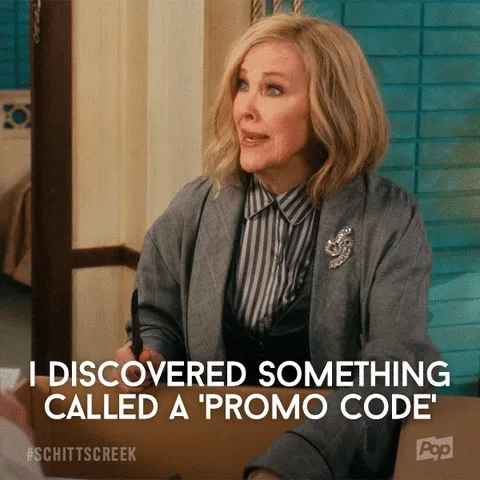How discounting impacts a luxury retailer’s brand image
Supply chain issues are driving luxury bands to do what would previously have been considered brand poison: marking down products.

Schitt’s Creek/CBC via Giphy
• 4 min read
Who doesn’t love a good discount? Imagine the latest Gucci loafers for half-off or the perfect winter coat from Yves Saint Laurent for 70% off.
Sadly, luxury retailers have traditionally shied away from deep discounts. Despite inflation and inventory troubles pushing the retail industry toward getting goods out the door, even if it is for a discount, luxury tends to be recession-proof.
“In fact, luxury tends to perform better than other markets during periods of economic hardship, as its primary customer base is high-income earners that can weather the economic storm,” Melanie Larsen, strategist at WGSN Insight, told Retail Brew.
- Luxury sales reached $301 billion in 2021 during the pandemic—a 7% increase from 2019—and sales are projected to reach $419 billion by 2027, she noted.
- Moreover, the likes of LVMH, Kering, and Hermès have reported double-digit sales growth in the first nine months of the year, indicating resilience among luxury companies, Swarooprani Muralidhar, senior analyst at Coresight Research, told Retail Brew.
So while some luxury brands have turned to price increases to make up for losses resulting from supply-chain issues, others are feeling the pressure from the looming recession and finally giving discounting a real shot, but doing so in a way that doesn’t hamper their aspirational brand image.
Take it down a notch: Over the past couple of months, multiple third-party luxury platforms—like Net-a-Porter, Farfetch, and MatchesFashion—have gone beyond offering sample and occasional seasonal sales (a regular occurrence in luxury), driving the discount trend within luxury.
“High-end, multi-brand e-tailers provide luxury brands with visibility and tend to mark down both new- and old-season collection items, while luxury brands, such as French powerhouse Chanel, opt for bi-annual sales where only specific items are discounted at a very low rate,” Larsen explained.
Offering discounts through third-party marketplaces also protects the brand’s equity as they can agree on set discount percentages with the e-comm sites. Moreover, this strategy can help retailers avoid the perception of being a “discount brand.”
Brand new lens: “When you think about how these luxury brands manage discounts, you’re not going to see them discount in the mainstay store; you’re not going to walk by and see a 25% off sale,” Timothy Derr, partner in Kearney’s consumer practice, told Retail Brew, adding that retailers will start thinking of other innovative ways to mark down their products. “You will start to see them adapt to client events, thinking about different sales triggers, whether it be around birthdays, or whether it be around the evolution of subscription models, or… the resale market as well,” he said.
Regardless of the approach, the ultimate goal is protecting the brand’s image.
Most loyal luxury shoppers fall in the high-income bracket (duh!) and tend to shop luxury items for their “perceived value,” Muralidhar said, adding that in economics these goods are termed “Veblen goods,” “where the demand for such goods rises as their prices rise, thus reversing the law of demand.”
Retail news that keeps industry pros in the know
Retail Brew delivers the latest retail industry news and insights surrounding marketing, DTC, and e-commerce to keep leaders and decision-makers up to date.
Preserve and protect: “Deep discounts in luxury would therefore be detrimental to the consumer perception of the brand and erode the value of the brand that the company has spent years building,” Muralidhar said.
Larsen agreed, saying that while discounting might provide a “quick economic boost,” it can do more damage to the brand’s identity and the larger concept of luxury. “It eliminates the feeling of exclusivity and opulence,” she said.
Still, this doesn’t mean luxury labels need to completely steer clear of discounts; they just have to be a lot savvier than other retailers when approaching it. “I don’t think it’s going to impact brand loyalty significantly, unless we start seeing everyone walking down the street in Gucci,” Derr said.
And while in the past, high-end brands have resorted to destroying merchandise to manage inventory, consumer sentiment might be more primed for discounts, the current industry focus on sustainability.
“Lower cost inventory through discount channels presents an opportunity to engage new consumers vs. deteriorate the brand,” Derr said. “This could be a way to introduce the brand to new consumer segments and drive earlier adoption. I view this as a positive.”—JS
Retail news that keeps industry pros in the know
Retail Brew delivers the latest retail industry news and insights surrounding marketing, DTC, and e-commerce to keep leaders and decision-makers up to date.